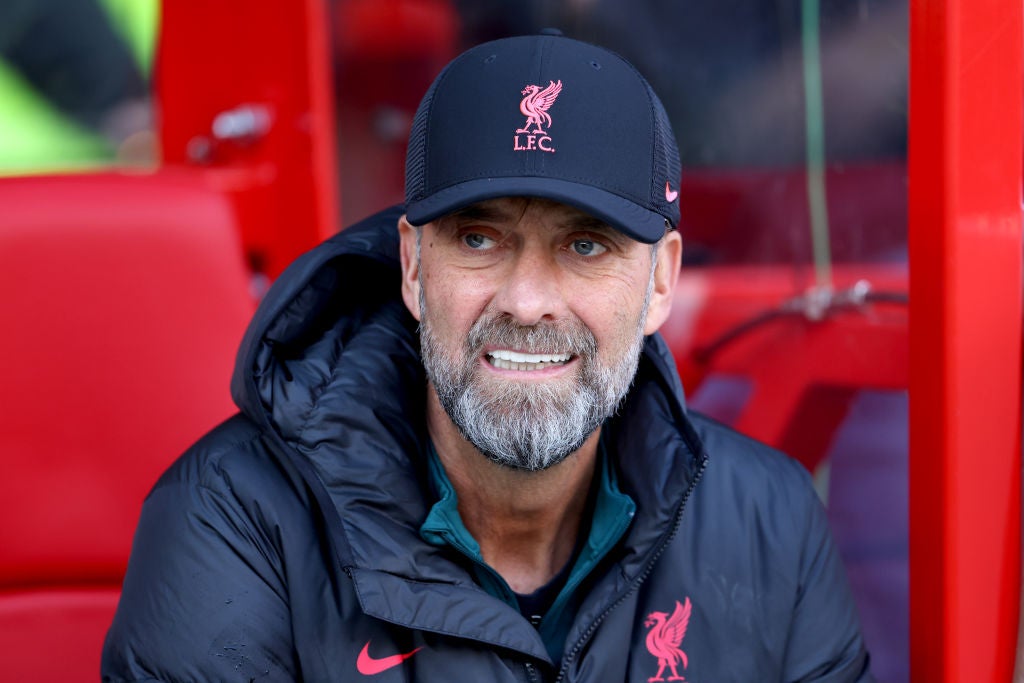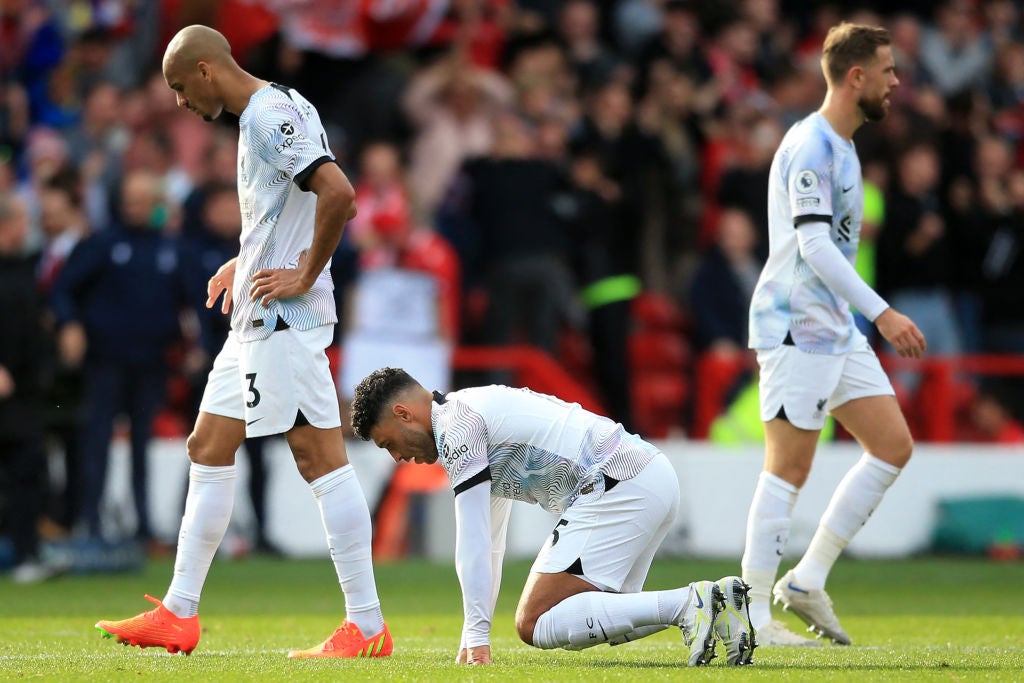
Even the ground is named after the high priest of a footballing formation. When Liverpool visit Amsterdam on Wednesday, they will play in the Johan Cruijff ArenA, the title reflecting both the original and Dutch spelling of his surname and his vast influence. Cruyff is indelibly associated with the concept of total football and the shape of 4-3-3.
Cruyff’s legacy lives on. His disciple Pep Guardiola perhaps played his most Cruyffian version of 4-3-3 with Barcelona and, in the last two seasons, with Manchester City, when the use of a false nine brought the most rotation between players. Jurgen Klopp was a byword for 4-3-3, too, but not in the same way as Guardiola. The Catalan’s wingers are ordered to operate so wide that, at Barcelona, Thierry Henry was famously substituted for coming infield. The German’s wide men were so narrow that they were in effect channel runners, Mohamed Salah and Sadio Mane becoming so prolific in part because they were charged with operating between the opposition’s full-backs and centre-backs.
They could be strangers to the touchline and if one reason why Klopp’s 4-3-3 broke down this season may have been the tweak to use Salah wider, rendering him less prolific. But a change of system means that Klopp, who reinvented 4-3-3 by getting the full-backs to supply the width, may go to Amsterdam with plan B.

The formation he has fielded in the last six games could be deemed 4-2-3-1. It felt more of a 4-2-4 at home to Rangers, when it worked, and away at Arsenal, when it left Liverpool outnumbered in midfield and liable to be counterattacked if the first line of the press failed. It was more of a 4-4-2 in the victory over Manchester City.
The reinvention Klopp promised after defeat to Napoli has only been partly successful. Liverpool have two losses in their six games with a new system, different matches lending themselves to different conclusions. They have a squad constructed for one system trying to fit into a second, with their problems compounded by injuries.
Their two most natural left-wingers are Luis Diaz and Diogo Jota. Both are sidelined. It leaves Fabio Carvalho looking the only obvious fit for the role. Potential alternatives have also been absent, though Curtis Jones is two games into his comeback. Alex Oxlade-Chamberlain, who made his return off the bench at Nottingham Forest, has not operated as a conventional wide man in five years since leaving Arsenal.
Meanwhile, Harvey Elliott is the only player in Klopp’s squad whose preference in a 4-4-2 would be for the right-midfield berth. Salah got the graveyard shift there against West Ham, blunting him after a devastating display against City three days earlier. The lack of natural wide men is unsurprising, given how targeted Liverpool’s recruitment has been in recent years and the fixed preference for 4-3-3. If bona fide wingers have been an endangered species, Liverpool accumulated players for the half-spaces infield.
The peculiarities of their midfield contribute. Klopp has 10 midfielders, even if the injured Arthur Melo feels like a sideshow. Yet several can play in a trio, where they have the fewest defensive responsibilities, but do not look designed to be in a central duo: Elliott’s brief time in the middle pair has been awkward and Jones struggled at Forest when parachuted in after Thiago Alcantara fell ill. The wild card, in this as in much else, is Naby Keita, who could be capable of lining up on the left or in a central pair; yet as he isn’t available, Klopp’s only compelling options are the old firm of Fabinho, Thiago, Jordan Henderson and James Milner.

The absences in attack of Jota, Diaz and Darwin Nunez left Liverpool with only two potential strikers on Saturday, in Salah and Roberto Firmino, even if the Uruguayan may return in Holland. Carvalho, Elliott, Jones and Oxlade-Chamberlain feel better suited to life in a front three than a duo. None remotely resembles a conventional centre-forward, even if a couple can be used as a No 10.
The difficulty, in part, is that Liverpool have a squad configured for Klopp’s gameplan: or the one he did have, anyway. Liverpool’s width stemmed from their full-backs and, with the exception of Diaz, they have not bought anyone resembling an out-and-out winger since Xherdan Shaqiri.
The composition of the squad alone suggests the switch in system was a quick fix to stem the bleeding. It brought one famous win, against City, but may not be a long-term solution. Yet as square pegs are crowbarred into round holes, the arguments for reverting to a familiar shape may be primarily pragmatic, to put players in their preferred positions.
Amsterdam may be the spiritual home of a system. If the Cruyffian 4-3-3, in various ways, has survived for half a century since his playing days, Liverpool’s move away from the Kloppian 4-3-3 may last rather less time.








